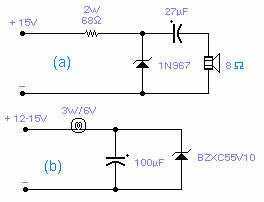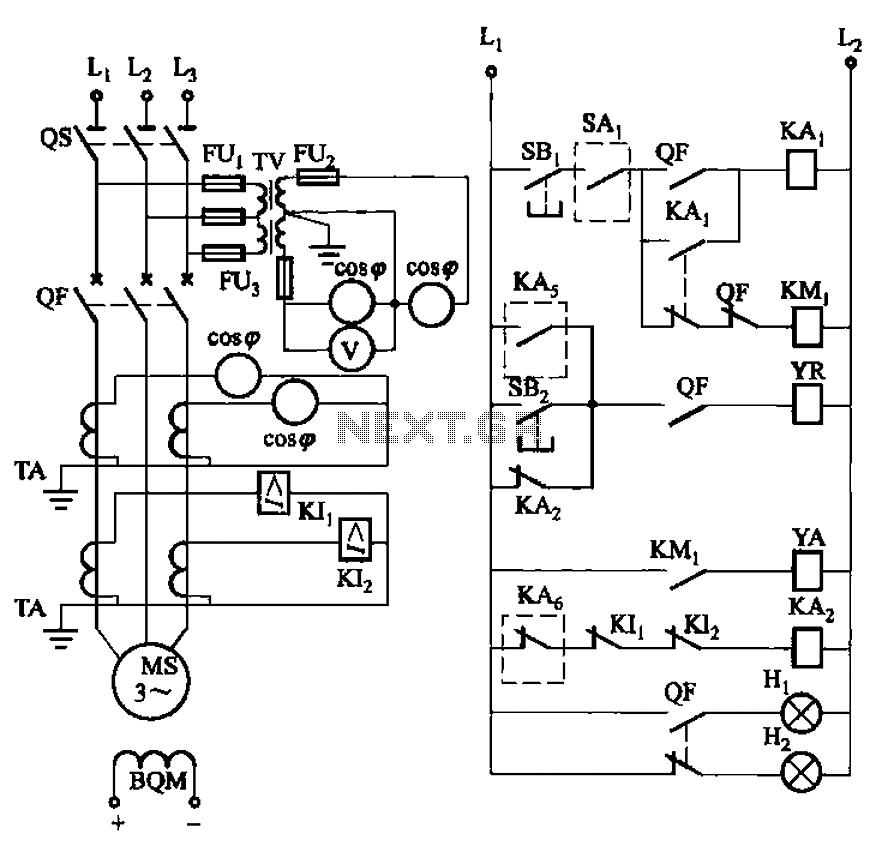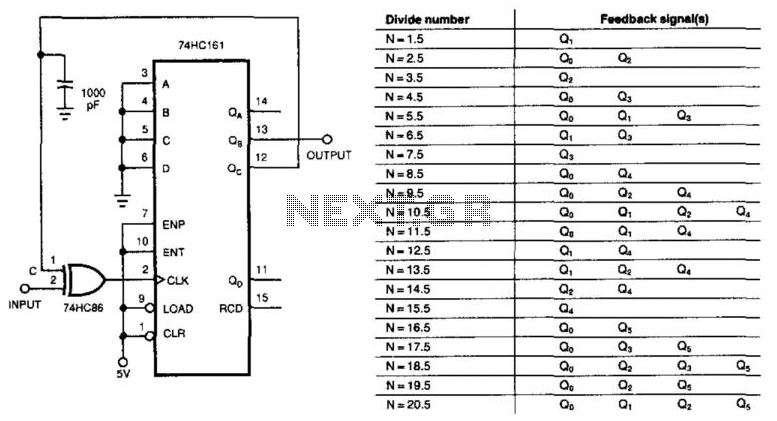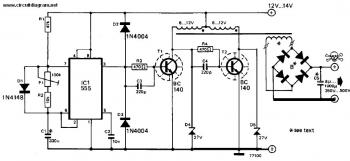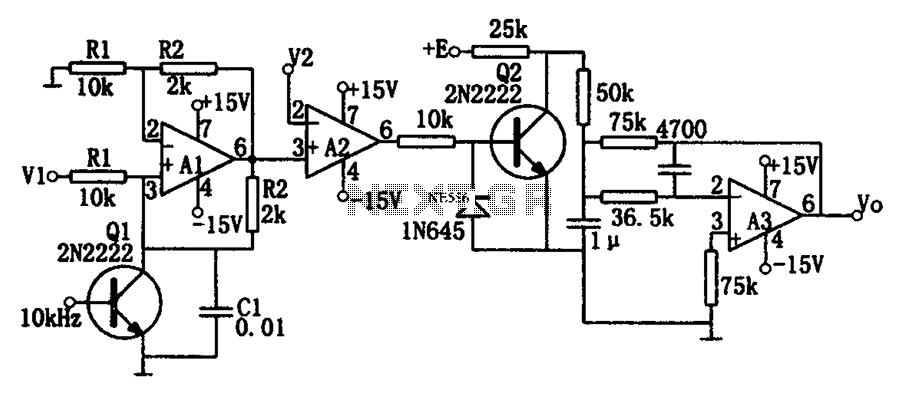
Electronics Telephone Talking Circuit
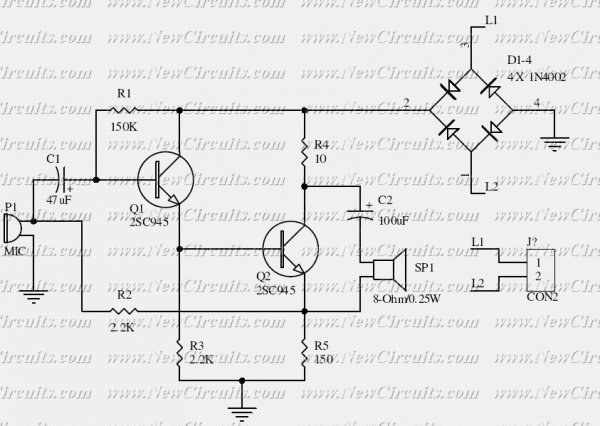
This is the basis of electronics telephone sets. You can use it to replace the talking circuit of an old telephone set with new design, better noise rejection and reliability one. Also you can use it to build a telephone set without dial circuit to answer a call.
The electronic telephone set circuit serves as a fundamental component in modern telecommunications, allowing for the replacement of outdated talking circuits in traditional telephone sets. This updated design emphasizes improved noise rejection and enhanced reliability, addressing common issues found in older models.
The circuit typically includes a microphone for sound input, an amplifier to boost the audio signal, and a speaker for sound output. The microphone converts sound waves into electrical signals, which are then amplified to ensure clarity and volume when transmitted through the telephone line. The output from the amplifier is sent to a speaker, which converts the electrical signals back into audible sound.
Additionally, the circuit can be designed to function without a dial mechanism, allowing for simpler operation where users can answer incoming calls without the need for dialing. This feature is particularly useful in environments where ease of use is paramount, such as in emergency services or for individuals with mobility challenges.
Furthermore, careful consideration should be given to the choice of components to maximize noise rejection. This may involve using high-quality capacitors and resistors, as well as implementing shielding techniques to minimize electromagnetic interference. The layout of the circuit board is also crucial; proper placement of components can help reduce parasitic capacitance and inductance, which can adversely affect signal integrity.
In summary, this electronic telephone set circuit design not only modernizes traditional telephone systems but also enhances user experience through improved performance and functionality.This is the basis of electronics telephone sets. You can use it to replace the talking circuit of an old telephone set with new design, better noise rejection and reliability one. Also you can use it to build a telephone set without dial circuit to answer a call. 🔗 External reference
The electronic telephone set circuit serves as a fundamental component in modern telecommunications, allowing for the replacement of outdated talking circuits in traditional telephone sets. This updated design emphasizes improved noise rejection and enhanced reliability, addressing common issues found in older models.
The circuit typically includes a microphone for sound input, an amplifier to boost the audio signal, and a speaker for sound output. The microphone converts sound waves into electrical signals, which are then amplified to ensure clarity and volume when transmitted through the telephone line. The output from the amplifier is sent to a speaker, which converts the electrical signals back into audible sound.
Additionally, the circuit can be designed to function without a dial mechanism, allowing for simpler operation where users can answer incoming calls without the need for dialing. This feature is particularly useful in environments where ease of use is paramount, such as in emergency services or for individuals with mobility challenges.
Furthermore, careful consideration should be given to the choice of components to maximize noise rejection. This may involve using high-quality capacitors and resistors, as well as implementing shielding techniques to minimize electromagnetic interference. The layout of the circuit board is also crucial; proper placement of components can help reduce parasitic capacitance and inductance, which can adversely affect signal integrity.
In summary, this electronic telephone set circuit design not only modernizes traditional telephone systems but also enhances user experience through improved performance and functionality.This is the basis of electronics telephone sets. You can use it to replace the talking circuit of an old telephone set with new design, better noise rejection and reliability one. Also you can use it to build a telephone set without dial circuit to answer a call. 🔗 External reference
Warning: include(partials/cookie-banner.php): Failed to open stream: Permission denied in /var/www/html/nextgr/view-circuit.php on line 713
Warning: include(): Failed opening 'partials/cookie-banner.php' for inclusion (include_path='.:/usr/share/php') in /var/www/html/nextgr/view-circuit.php on line 713
